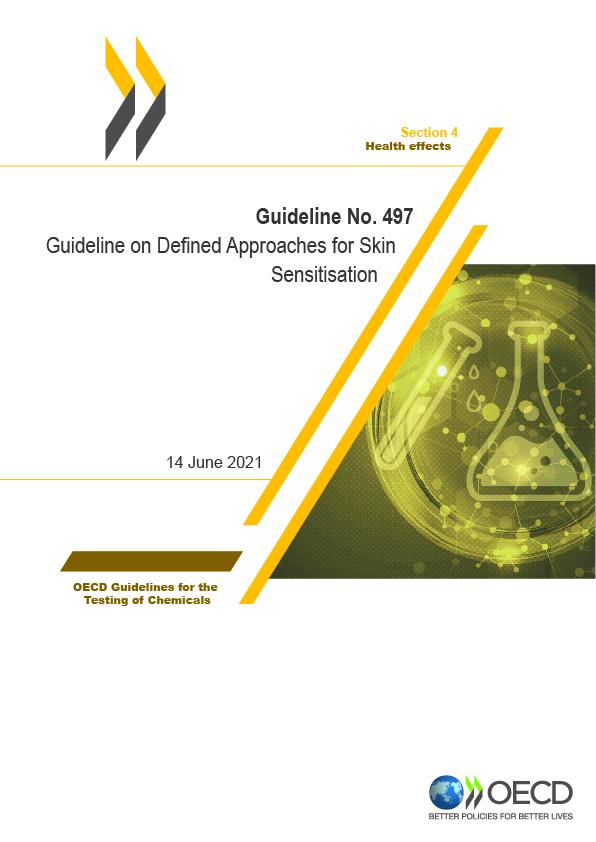
The JRC’s EU Reference Laboratory for alternatives to animal testing (EURL ECVAM) contributed to the new OECD guideline on Defined Approaches for skin sensitisation. This can replace the need for animal testing and represents the first example of international standards for chemical safety assessment based on the integration of non-animal data.
About one third of the chemicals can cause contact allergies in people. These chemical sensitisers trigger an immune response that can severely affect quality of life. It is estimated that 20% of the European population suffers from contact allergies due to at least one chemical.
Identification of chemicals that might induce skin allergies is therefore key to establish safe concentrations for use of these chemicals in consumer products.
Moving away from animal models
Historically, the potential of chemicals to induce contact allergy has been assessed using animal tests, for example the Local Lymph Node Assay (LLNA) carried out in rodents (OECD TG 429).
“Non-animal methods for skin sensitisation do exist, however none of these test methods are considered as sufficient stand-alone replacements of animal tests” explains Silvia Casati, JRC scientist leading the project. “Data from non-animal methods had to be used in combination but there was not a standardised approach for this, which is exactly what a defined approach provides.”
A defined approach indeed gives instructions on how to use specific combinations of non-animal methods and how to interpret the resulting data with the use of a fixed procedure.
“This guideline includes three Defined Approaches (DA) for skin sensitisation” continues Silvia “that use data derived from combinations of validated chemistry-based and cell-based in vitro tests, and in some cases from computer models too. These DAs have comparable or even better performance than the LLNA test.”
A step closer towards harmonisation and international acceptance
According to Maurice Whelan, head of EURL ECVAM “This guideline paves the way to the adoption of more harmonised approaches that address regulatory needs and reduce the use of animal studies. What’s more, data generated under this guideline must be mutually accepted by all 36 OECD member countries. This also saves the chemical industry the costs of duplicate testing for products that are sold in more than one country.”
Like the LLNA method, two of the DAs also provide information to distinguish between strong and weak sensitisers as required by the Globally Harmonised System for Classification and Labelling. The non-animal methods used in isolation are not able to provide this information.
JRC specific role
On behalf of the European Commission, JRC scientists led the project within the OECD Test Guidelines Programme together with collaborators from the United States and Canada.
Over the last ten years, the JRC has had a pivotal role in the validation, expert peer-review and international regulatory adoption of non-animal methods that provide mechanistic information on the acquisition of contact allergies. The aim is to support the final EU policy goal of a full replacement of animal experiments as soon as scientifically possible, as set out in Directive 2010/63/EU for the protection of animals for scientific purposes.
In 2017, the JRC hosted a special meeting of the OECD Test Guidelines Programme to discuss the project proposal from the JRC, United States and Canada. It aimed at translating into an international guideline the use of prescribed combinations (i.e. Defined Approaches) of the non-animal methods already adopted by the OECD, each addressing a specific mechanism within the skin sensitisation Adverse Outcome Pathway (AOP), and predictions from Quantitative Structure Activity Relationships (QSARs):
• the Direct Peptide Reactivity Assay (DPRA, OECD TG 442C),
• the KeratinoSens™ (OECD TG 442D) and
• the human Cell Line Activation Assay (h-CLAT, OECD TG 442D)
The project received support from the OECD Expert Group on Defined Approaches for Skin Sensitisation comprised of scientific experts from regulatory agencies, validation bodies, non-governmental organisations, and industry.
The Guideline on Defined Approaches for Skin Sensitisation was adopted at the 33rd Meeting of the Working Party of the National Coordinators of the Test Guidelines Programme held in April 2021 and can now be applied internationally.
Related Content
New OECD guideline on Defined Approaches for skin sensitisation
Details
- Publication date
- 23 June 2021
